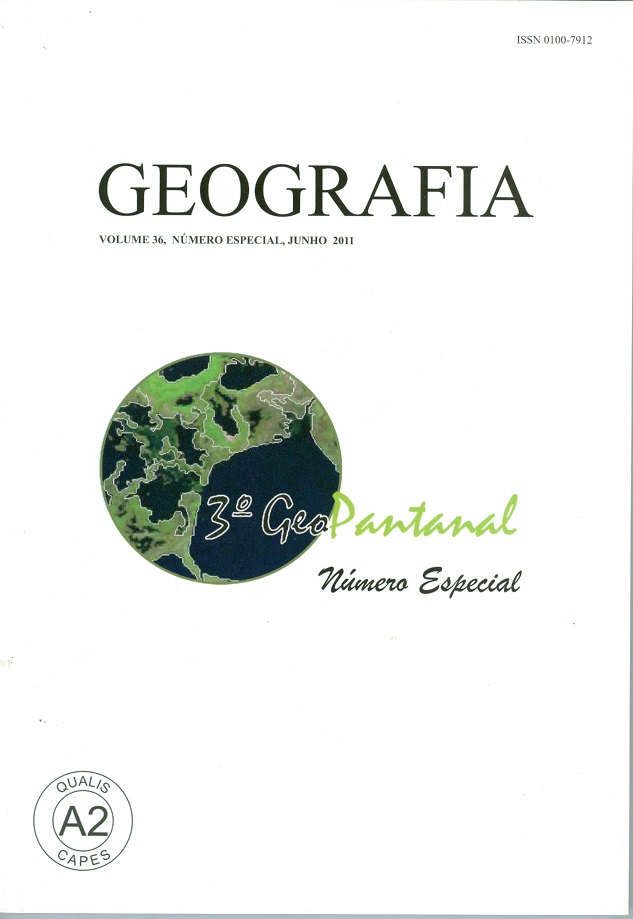REFINEMENT OF THE DIGITAL ELEVATION MODEL APPLIED TO EROSION MODELING OF WATERSHEDS
Abstract
Rapid soil erosion is a major threat to the sustainability of ecosystems (PIMENTEL et al., 1995, p.1118). The increase in erosion processes across the Alto Taquari sub-basin (BAT) intensified silting up the Taquari river in the Pantanal region, and consequently the inundation of floodplain areas around its lower course. This inundation is considered the most severe impact, both environmentally and socio-economically for the Pantanal (GALDINO; PELLEGRIN, 2003, p.11). Among all sub-basins within the Alto Paraguai watershed (BAP), BAT is one of the regions showing the highest erosion potential (GALDINO et al., 2006, p.113), and also one of the highest rates of sediment production (GALDINO; PELLEGRIN, 2003, p.23). Therefore, a modeling of erosion processes aiming to reduce the amount of sediment is a necessity presented for the conservation plan of BAP, also applied to BAT (GALDINO; PELLEGRIN, 2003, p.26). In the context, erosion modeling allows an evaluation of the erosion potential of natural and human factors, thus supporting the conservation plan of that watershed (BOTELHO, 2009, p.277). The empiric model named Universal Soil Loss Equation (USLE) (WISCHMEIER; SMITH, 1978, p.4) allows the estimation of soil loss caused by hydric erosion in a given area which was originally an agricultural field.Downloads
Published
Issue
Section
License
The authors maintain the copyright and grant GEOGRAFIA the right of first publication, with the articles simultaneously licensed under the Creative Commons BY 4.0 License, which allows sharing and adapting the articles for any purpose, as long as appropriate credits and provisions of image rights, privacy or moral rights. Other legal attributions can be accessed at: https://creativecommons.org/licenses/by/4.0/legalcode.en.
Geography, Rio Claro, SP, Brazil - eISSN 1983-8700 is licensed under the Creative Commons BY 4.0 License.





